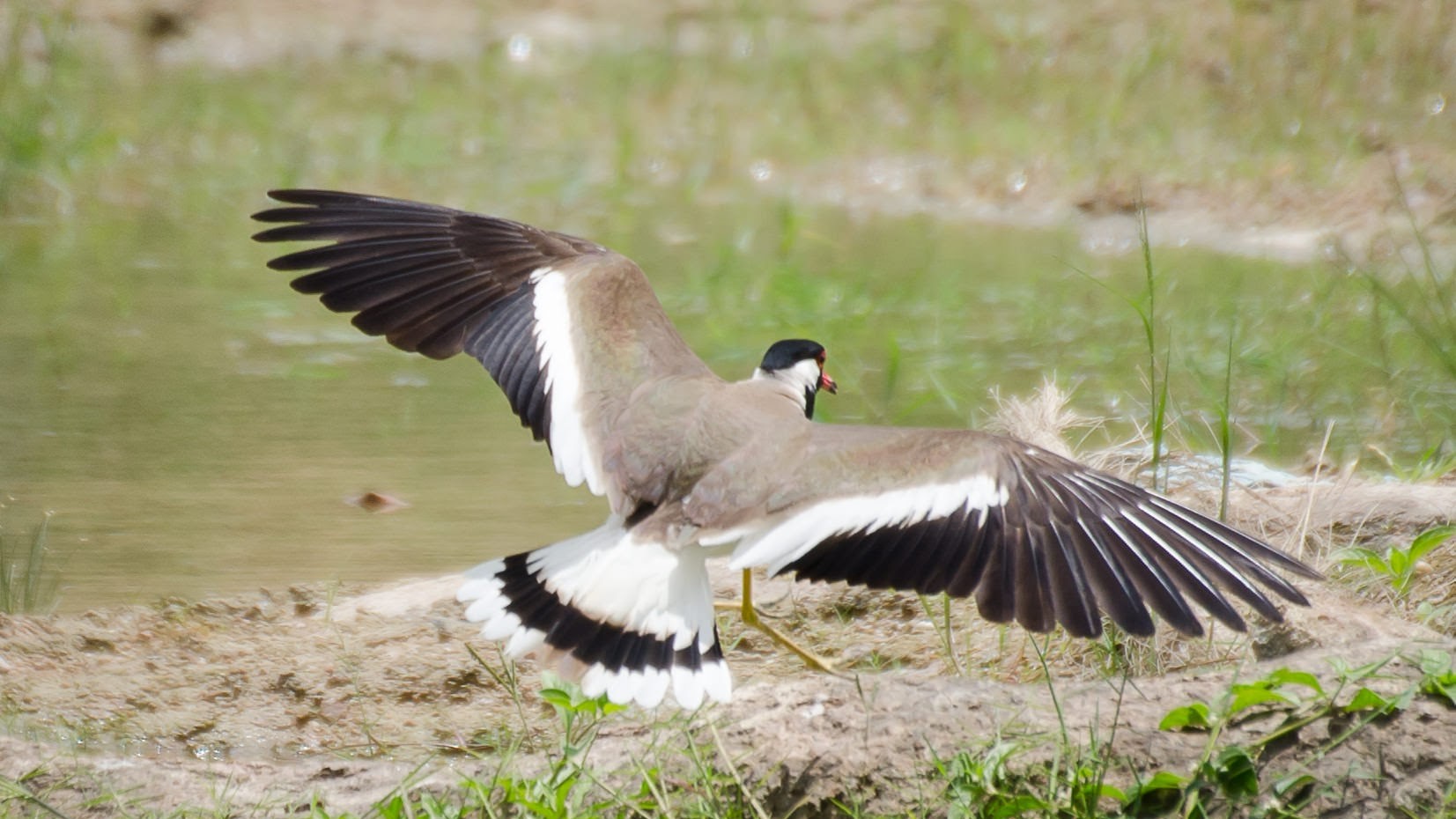Red-wattled Lapwing
A species of Lapwings Scientific name : Vanellus indicus Genus : Lapwings
Red-wattled Lapwing, A species of Lapwings
Botanical name: Vanellus indicus
Genus: Lapwings
Content
Description People often ask General Info
 Photo By Drkvijay2000 , used under CC-BY-SA-4.0 /Cropped and compressed from original
Photo By Drkvijay2000 , used under CC-BY-SA-4.0 /Cropped and compressed from original Description
The wings and back are light brown with a purple to green sheen, but the head, a bib on the front and back of the neck are black. Prominently white patch runs between these two colours, from belly and tail, flanking the neck to the sides of crown. Short tail is tipped black. A red fleshy wattle in front of each eye, black-tipped red bill, and the long legs are yellow. In flight, prominent white wing bars formed by the white on the secondary coverts. 
Size
35 cm
Nest Placement
Ground
Feeding Habits
Red-wattled Lapwing primarily consumes insects, snails, and invertebrates, occasionally eating grains. Active mainly by day, red-wattled Lapwing forages on the ground, using its legs to unearth insects from the soil. Red-wattled Lapwing adapts a unique diurnal and nocturnal feeding pattern.
Habitat
Red-wattled Lapwing typically inhabits open areas near fresh or brackish water including wet grasslands, rivers, mudbanks, and pools. It is often found in agricultural landscapes such as cornfields, ploughed lands, and rural gardens, as well as along highways on grassy verges. The species adapts well to different elevations, from lowlands to high altitudes in the Himalayas. Red-wattled Lapwing can also occupy open forests, wastelands, fallow fields, and may be locally present in desert regions. Their habitat range includes a preference for areas close to water and human-altered landscapes across broader geographical regions.
Dite type
Insectivorous
People often ask
General Info
Feeding Habits
Bird food type
Behavior
The breeding season is mainly March to August. The courtship involves the male puffing its feathers and pointing its beak upwards. The male then shuffles around the female. Several males may display to females and they may be close together. The eggs are laid in a ground scrape or depression sometimes fringed with pebbles, goat or hare droppings. About 3–4 black-blotched buff eggs shaped a bit like a peg-top (pyriform), 42x30 mm on average. Nests are difficult to find since the eggs are cryptically coloured and usually matches the ground pattern. 
Distribution Area
It breeds from West Asia (Iraq, SW Iran, Persian Gulf) eastwards across South Asia (Baluchistan, Sri Lanka, Afghanistan, Pakistan, the entire Indian subcontinent up to Kanyakumari and up to 1800m in Kashmir/Nepal), with another sub-species further east in Southeast Asia. 
Species Status
Not globally threatened.
Scientific Classification
Phylum
Chordates Class
Birds Order
Shorebirds Family
Plovers Genus
Lapwings Species
Red-wattled Lapwing